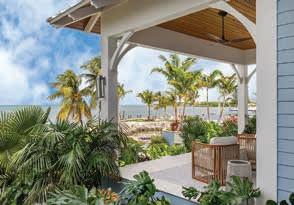

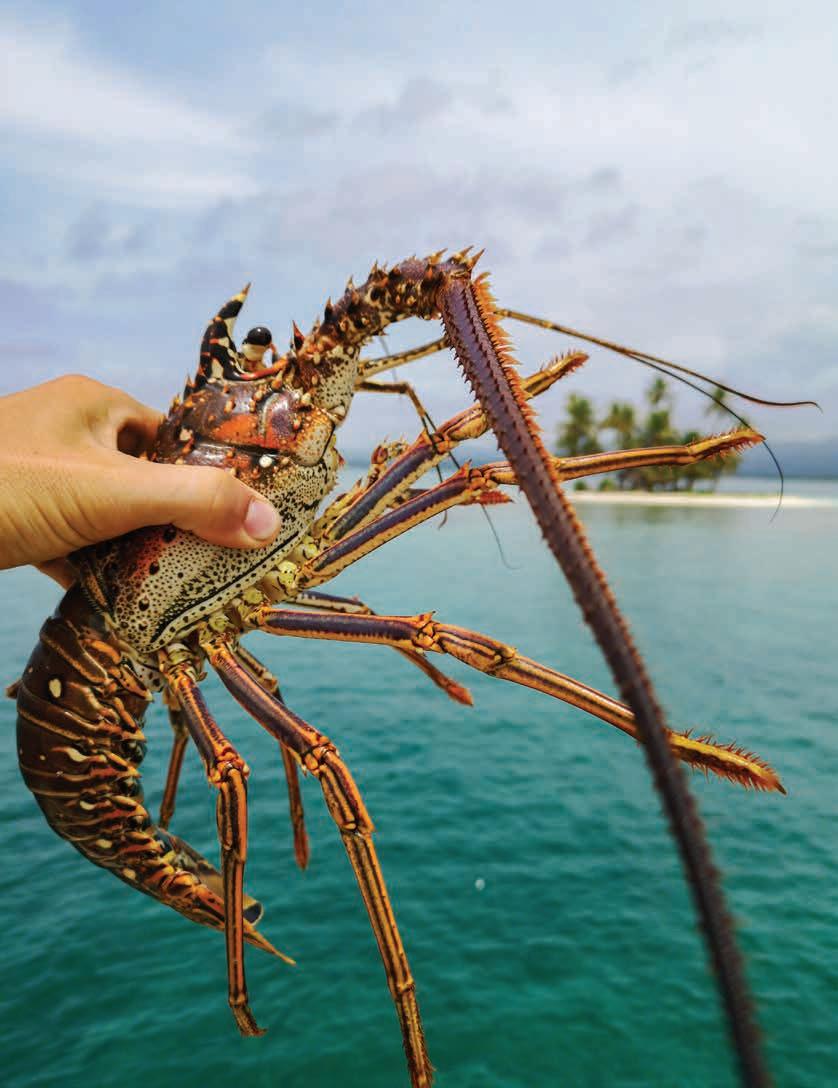















If you are looking for a caring, qualified dentist in Key West, then look no further. From your first contact with our office, you will notice that Island Dental is not your typical dentistry. We've worked hard to build an exceptional team of dedicated, caring and experienced professionals committed to the dental health of you and your family.
Our services include: General Dentistry | Teeth Whitening Crowns | Preventive Care | Periodontal Exams | Botox






Jump in and ‘bug out’ with this edition of OnBoard Magazine, dedicated to all those who just don’t feel at home unless they’re on or under the waves.
When Mother Nature cranks up the thermostat in July, August and September, the brave souls who venture outside know: You’d better have a plan to get on the water. And as Erin Stover shares, that doesn’t necessarily mean buying a B.O.A.T. (Break Out Another Thousand).

Mini-season and the start of the regular Florida spiny lobster season are sure to bring droves to our islands, so included in this guide are gear tips, fun facts and a complete lowdown on regulations to make sure you’re securing your catch safely, humanely, efficiently – and LEGALLY.
Once the cooler is full and the family is happy, take your bounty to the pros at some of our favorite cook-yourcatch Florida Keys restaurants spotlighted in these pages – many of which are accessible by water. Fried goodness, specialty house sauces and ice-cold drinks await … and you’ve earned them.
While you’re conquering the waves, take a moment to appreciate the wildlife around you – like the least terns in Mark Hedden’s birding column. And if you’re unfamiliar with our waters or boating etiquette, take a minute to laugh and brush up with our ‘Top 10 Signs You Might Be a Googan’ – or better yet, link up with a local guide to show you the way.


Most importantly, please remember: This is all for nothing if we can’t continue to enjoy our reefs, wildlife and waters for decades to come. Small upgrades in gear and anchoring techniques, like the breakaway systems highlighted by Mandy Miles, can make a massive difference when paired with a mindset that prioritizes sustainable harvests with minimal disturbances.

On behalf of our staff, we hope you laugh and learn with this edition of OnBoard Magazine, designed to maximize your catch while you minimize your impact.
Load up the cooler, fire up the engine, hit the sandbar, and carefully rehearse your fish tales – we absolutely love this season.
Sincerely,
Alex Rickert




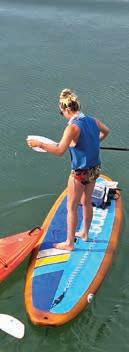





Publisher Jason Koler jason@keysweekly.com
Managing Partner
Britt Myers britt@keysweekly.com
Creative Director
Stephanie Mitchell stephanie@keysweekly.com
Art/Design
Javier Reyes javier@keysweekly.com
Editors
Alex Rickert
alex@keysweekly.com
Mandy Miles mandy@keysweekly.com
Jim McCarthy jim@keysweekly.com
Copy Editor
Mike Howie mike@keysweekly.com
Account Executives
Patti Childress patti@keysweekly.com
Stephanie Mitchell stephanie@keysweekly.com
Jill Miranda Baker jill@keysweekly.com
Production Manager Anneke Patterson anneke@keysweekly.com
Art/Design
Jordan Baylis jordan@overseasmediagroup.com
Web Master
Travis Cready travis@keysweekly.com
Executive Administrator
Char Hruska char@keysweekly.com
Contributors
Erin Stover, Bill & Kylie Giliberti, Mark Hedden, Mandy Miles, Jim McCarthy
Digital Support
Overseas Media Group
Tavernier






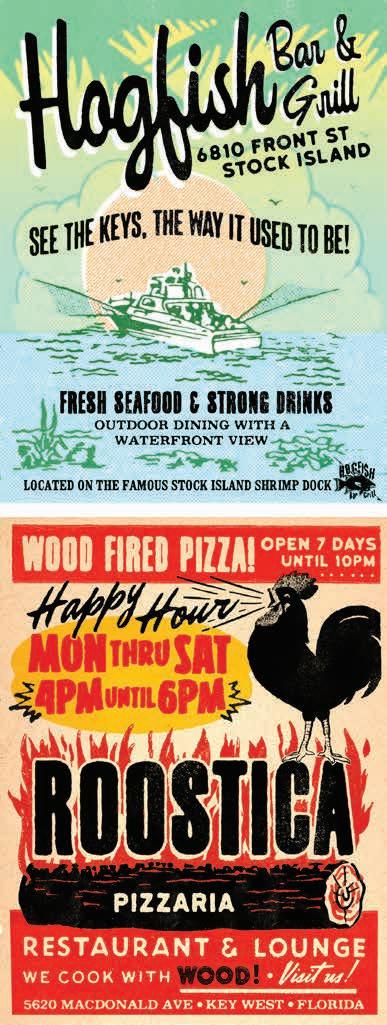
By Alex Rickert
For locals, mini-season and the months bringing throngs of summer vacation boaters to the Keys are known by another name, too: Googan season.
For a fantastic definition of this slang term, look no further than UrbanDictionary.com:
“A Googan is a term used by local fishermen to describe idiots on the water. They are dangerous, oblivious and lack talent when operating boats, choosing the correct fishing gear and the like. A Googan might look capable and confident, but be careful around them. Their lack of knowledge, skills and
abilities around the water can disturb your day in any number of ways. Usually, their confidence far outweighs their competence, and their ineptitude shows itself rather quickly through either words, appearance or actions.”
These are the folks who run completely aground over precious seagrass, drive on full plane through no-wake canals, and just make life miserable on the water. We recognize there are plenty of captains who just aren’t well-versed in the Keys’ marine etiquette and would gladly shape up if given the chance. So, we asked our professional captains from Key Largo to Key West, and here are our…
1. “We were out in the middle of nowhere in the Gulf with several people spearfishing in the water. I looked up and there was a random boat motoring towards us; I assumed he was law enforcement. It was a recreational boat, and he pulled within 100 feet of my boat, dropped his anchor, and started putting dive gear on. I asked him what the heck he was doing. He said he saw another boat here with a dive flag up, so he figured it would be a good spearfishing spot.” – Capt. Aaron Young (Key West Waterman on YouTube)
2. “Anchoring directly over someone’s line while loudly asking ‘Y’all catching anything?’ Yes, I’m catching a headache. Give folks some casting room; the ocean is huge.”
– Capt. Kit Mobley, DirtyBoat Charters
3. “Drifting on a wreck with several other boats doing the same drift. Then one boat, not drifting, pulls right up to the wreck and drops rigs. It blocks every other boat from drifting over the wreck.” – Capt. Chris Still, The Tackle Box
4. “The guy who tows his 1971 19-foot Bayliner down from Ohio … and is heard calling for help at the Humps (30 miles offshore).” – Capt. Johnny Maddox, Johnny Maddox Sportfishing Adventures
5. “Having a breakaway system like anchor balls on board that assist with pulling the anchor free if an anchor gets stuck is important. If you want my opinion, everyone should have a set of ‘balls’ onboard to help pull your anchor.”
– Capt. Eric Wink, High Caliber Sport Fishing
6. “When folks show up at Sombrero Reef, pull up next to you and ask if the fish are biting.” – Capt. Mike Marconi, Solé Watersports
7. “When trying to fish, they’ll say, ‘Look, there’s a good weed line,’ while they’re still inside the reef, where weed lines are useless, because they don’t hold any of the pelagic fish being targeted.”
— Capt. Stan Miles, Key West
8. “On more than one occasion, I’d be standing in a boat over someone diving in the water. They’d pop up and tell me ‘I’m not spearfishing’ – and then their big wooden speargun would float up right next to them, while I could see their lime-green catch bag right below them. I’d tell them ‘If I have to get my big toe wet to go get that, you’re going to jail.’” – Retired FWC officer Bobby Dube (Editor’s note: Spearfishing is illegal in state waters north of the Long Key bridge, and is never a legal method to harvest lobster.)
9. “They’ll drive a rental boat onto a flat. Then they push it off … and drive right back onto it.” – Capt. Nick Borraccino, Noreaster Sportfishing
10. “I’ll come across people with a full trolling spread going through the canals or by Sombrero Beach. When I ask what they’re doing, they’ll say they’re trolling for mahi because they saw weeds.”
– MCSO marine deputy Willie Guerra



























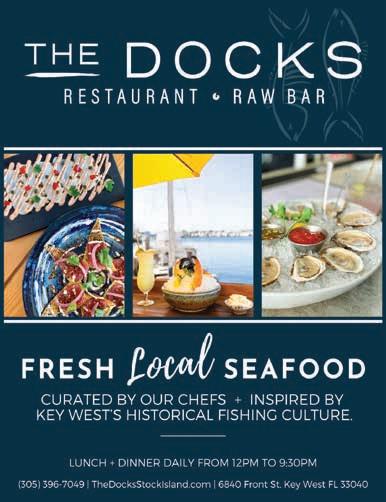


Our bright and airy space is a treasure trove of fashion forward essentials that embrace the island lifestyle.
Offering fabulous brands including Farm Rio, Trina Turk, Oliphant & more. Stop by and check out Key West’s go to spot for splurge worthy and on-trend styles.
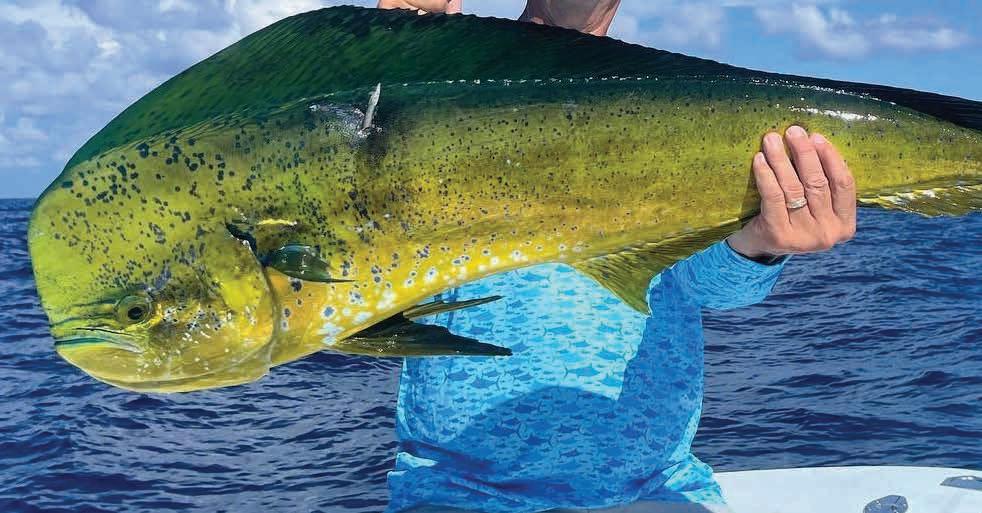
Waterfront dining spots will turn the day’s catch into a delicious meal
After a day spent on the water in the Keys, tie up the boat and turn your fish or lobster over to the seasoned pros at Keys eateries – no cooking when you’re tired, and no mess afterward. Split the bounty, try all of your favorite restaurants’ different preparations, and let everyone pick their favorites in a fantastic family-style spread.
Know before you go: Most restaurants require that fish brought in for cook-yourcatch is legal sized, in season, cleaned, deboned and ready for the pan. These meals are typically charged per pound of fish, and served on large family-style platters.

MM 5, oceanside, Stock Island
Nestled in the heart of Safe Harbor Marina on Stock Island, the Hogfish Bar & Grill offers a true taste of the Florida Keys as it used to be: no frills, just the essentials — cold drinks, fresh seafood, waterfront views and colorful Keys characters. This hidden gem is a beloved locals' spot, far removed from the downtown tourist haunts. Here, you'll find fresh seafood straight from the boats, strong drinks, friendly service and an authentic island vibe that has stood the test of time. The Hogfish staff is happy to cook your catch — fried, blackened or grilled with sides.
PERRY HOTEL & MARINA
7001 Shrimp Road, Stock Island
An authentic Key West experience can actually be found one island up, at the Perry Hotel & Marina on Shrimp Road. The fullservice marina and resort features multiple restaurants that will cook your catch, turning the day’s haul into something delicious.
And you don’t need to be a hotel guest to enjoy the culinary creations of Matt’s Stock Island Kitchen, the Salty Oyster outside eatery and Bad Burrito.
If arriving by boat — without or without a catch to cook — hail the Perry Marina on Channel 10 via a VHF radio, and let them know you’re coming, so the dockmaster can direct you to a slip.


MM 47.3, oceanside, Marathon
The Lazy Days-style fish is the go-to here – fried with a heap of Key lime butter, parmesan, tomatoes and green onions –but other preparations including coconut and jalapeño are strong competitors too. Pull up and end the day with family and friends around a massive platter of your catch – locals swear the fish and lobster always seems to deliciously multiply in Lazy Days’ kitchen. A second location is at MM 79.8 in Islamorada

MM 90.1, Tavernier
A can’t-miss destination at MM 90.1, bayside, Capt. Craig’s can cook your prized catch; just look at this whole fried snapper served with Thai dipping sauce. Known for having the best fish sandwich in town, Capt. Craig’s will turn that memorable fishing trip into a tasty meal.
MM 53.5, oceanside, Key Colony Beach
Tie up with the full boatload of family and friends after a day on the water – Sparky’s menu has something for everyone, whether it’s their famed woodfired pizzas, bacon-wrapped scallops, elaborate salads or pastas. Owners Matt and Carolyn Anthony say their cook-yourcatch is best done family-style, splitting filets between grilled, blackened and fried preparations for everyone to sample. Try out the coconut fried preparation with a sweet and tangy sauce to pair. By water, follow the canal dividing Key Colony Beach from Coco Plum.

13 Seagate Blvd., Key Largo, oceanside
Pilot House has been a Florida Keys favorite since 1950. Tie up and enjoy a delicious meal along the Key Largo waterfront. The tasty menu features fresh local seafood, pasta entrees, steaks, sandwiches and homemade Key lime pie. There’s food for everyone, and with weekly specials and daily happy hours, it’s the perfect complement to a day on the water. Find the Pilot House’s canal entrance at N25° 05.250’, W 080° 26.470’.

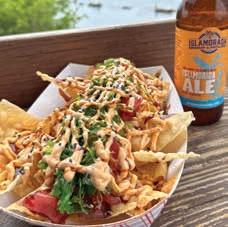
35th Street Gulf, Marathon
Options abound at one of Marathon’s renowned seafood markets. Tie up and enjoy tacos, platters, lobster reubens and a growing sushi menu, including poke bowls and delectable tuna nachos. Cook-yourcatch options include fried, blackened and grilled, served as a family-style platter. Pro tip: Show up at sunset at the upstairs bar and toast with the staff.
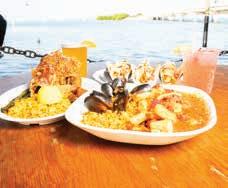
MM 77.5, Bayside, Islamorada
Looking for that perfect spot after a day spent fishing or soaking in the sun rays at the Islamorada sandbar? There may be no better place to grab a bite and enjoy all the activities that Robbie’s of Islamorada has to offer. The Hungry Tarpon offers delicious drinks like the Bloody Mary — voted Best in the Upper Keys. Lunch and dinner items include luscious appetizers, sandwiches and seafood dishes. The Hungry Tarpon will cook your catch to perfection.
Enjoy the Fireworks Display at midnight as our commercial boats leave the dock
Friday, August 1st | 9pm - Midnight DJ Jared starts at 8:30pm New Bar Name Announced at 9:15pm Complimentary Hors d'oeuvres start at 9:30pm Blessing of the Fleet in English & Spanish will be broadcast live over US1 Radio 11:50pm


















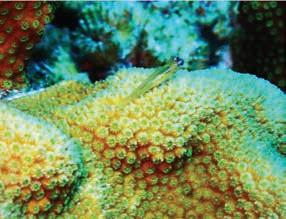

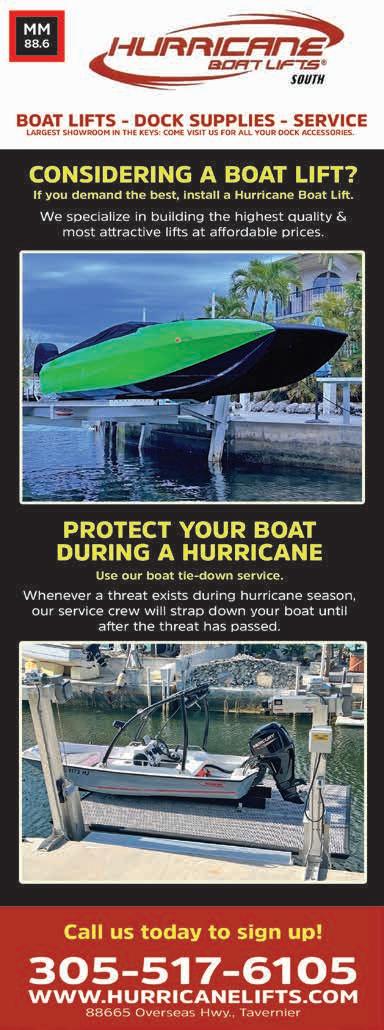
By Erin Stover
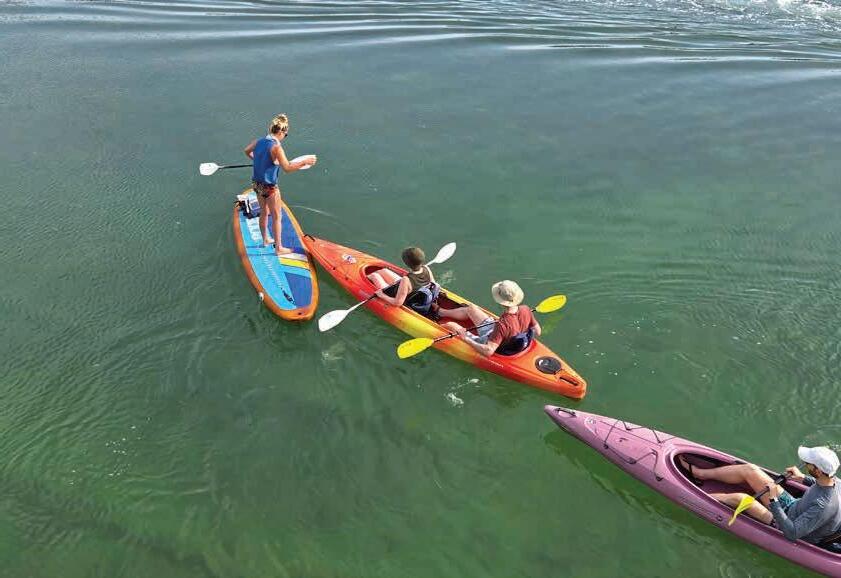
Living on a subtropical island in the summer months means constant temptation, baking on land while gazing out at the turquoise water taunting you from every side. While the Keys have a high per-capita rate of boat ownership, most residents, whether due to the cost, logistics or the daunting maintenance involved in owning a boat, are stuck sweating it out, seeking alternate ways to splash around. Fortunately, there are other means to float and fly across the perfect waters of the Keys. Ranging from pricey to go-jumpin-the-ocean-for-free, the options below offer access for every level of commitment.
Boat clubs and fractional ownership options are available through individuals or organizations like the Key West Yacht Club. These agreements allow people all the perks of boat ownership without any of the hassles or unexpected expenses. In fractional ownerships, multiple individuals share the cost of owning a boat, divvying up the purchase price, upkeep and dockage fees. Boat clubs operate on a model that charges an initiation fee, followed by monthly or annual dues. In return, members can take out boats as they please, often being able to forgo tasks like gathering ice or cleaning the deck at the end of a fun day. Another unique option in Key West is the Key West Sailing Center. A nonprofit, the center offers memberships starting at just $260 a year, which includes access to its full fleet of small sailing vessels after a short educational course.
For those who love to just show up and ship out, but don’t want the financial commitment of dues, there are countless boat rental options. Seasoned or aspiring captains can rent their own vessel starting around $350 to $400 for a half-day, or $550 to $700 for a full day, depending on the size and style of boat. Individuals who would rather kick back and let someone else do the driving

while they tend to the cold beers can opt for private charters. Lazy Dog on Stock Island, one of the best in the relaxation game, will take private parties (with up to six passengers) out to explore sandbars and mangrove islands for $600 for a half-day, with discounts for local residents.
Anyone living in the Keys year-round knows that the warmest months carry the slimmest margins. AC costs keep rising, but our summer economy stays placid as a windless day on the water. Boat rentals can feel like a luxury. Odds are, though, that most everyone in the Keys knows someone with a boat. Don’t treat this as a free option – let’s hang on to those manners – but also, don’t be afraid to ask. Generally speaking, a good friend will be happy to take someone along for the ride provided they kick in for fuel, fill the cooler or bring fried chicken for the crew.
So, what about the water-seekers who can’t afford a boat, but value their autonomy? An environmentally friendly and incredibly accessible option is paddling. Most outfitters rent kayaks or paddleboards for around $40. A few hours of carefree exploration at your own pace can become addictive, though. Thankfully, as far as habits are concerned, this one is healthy and inexpensive. Used paddleboards sell on the secondary market for around $200, with new boards ranging from about $500-$1,000. One small bit of advice here though – skip the infl atables. Even the gentlest soul, inhabiting the lightest body, can easily drag these across a chunk of coral in shallow water, or stay out long enough to feel some air seep out, rendering them useless at best, unsafe at worst.
No place to store a board? Or feeling the squeeze from even the lower end of water access? Take it all back to basics and just get your body in the water. Grab a pool noodle, tube or just your suit and a smile. While the Keys aren’t known for beaches, there are decent options for cooling off close to shore. Depending on the wind direction, calm water access can be found at Simonton Beach, Fort Zachary Taylor State Park or Smathers Beach. Moving up the Keys, the Ramrod swimming hole, the Jumping Bridge, the Horseshoe near Bahia Honda, or any of the public beaches or waterfront parks in the Middle and Upper Keys are excellent options. Jump in, float up and enjoy the salty water on your skin. After a few minutes, it won’t matter how you got there.













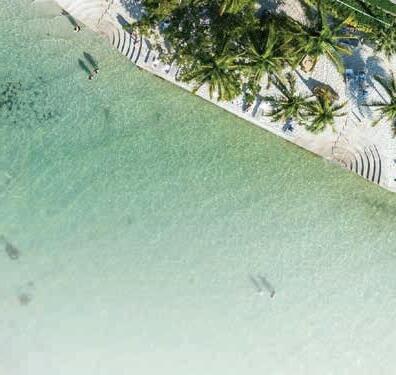





















































































By Alex Rickert
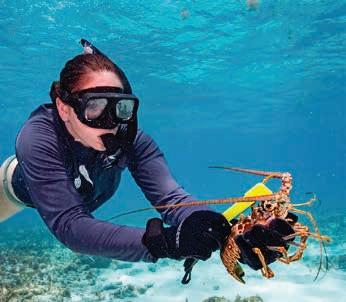
• Recreational harvesters are required to possess a valid Florida saltwater fishing license with a current spiny lobster permit. They can be purchased online at gooutdoorsflorida.com or by calling 1-888-HUNT-FLORIDA (486-8356).
• Spiny lobster must have a minimum carapace length greater than 3 inches, and the measurement must take place in the water. The carapace is measured beginning at the forward edge between the rostral horns, excluding soft tissue and proceeding along the middle to the rear edge of the carapace. If a lobster gauge can fit over the end of the carapace, the lobster is TOO SHORT. All recreationally harvested lobster must remain in whole condition while at sea.
• Egg-bearing (berried) spiny lobster must be released unharmed. Stripping egg-bearing females of eggs, and possession of spiny lobster tails from which eggs have been removed, is prohibited. Eggs are orange, yellow, brown or red masses found covering the underside of the lobster’s tail.
Want an all-in-one primer as you get ready to hit the water for mini-season on July 30 and 31? Our OnBoard staff have you covered.
The bag limit is six lobsters per active, licensed harvester per day in Monroe County, period. Making multiple trips to harvest the bag limit each time is ILLEGAL.
Possession limits apply both on and off the water. The possession limit, even when off the water, is six lobsters per licensed harvester on July 30, or 12 lobsters per licensed harvester on July 31 (six harvested per day of mini-season).
Gear that could puncture, penetrate or crush the shell of the lobster is prohibited. It is illegal to spearfish lobster.
Sport season / “mini-season”: the last consecutive Wednesday and Thursday in July, beginning at 12:01 a.m. on day one and ending at midnight on day two (July 30-31 in 2025).
Regular season: Aug. 6 through March 31.
While Gov. Ron DeSantis announced a first-of-itskind locals-only ‘minimini-season’ in 2024, that season will NOT continue in 2025.
• During mini-season, bully netting is the only legal way to harvest lobster at night, defined as one hour after sunset to one hour before sunrise. Night diving is permitted during the regular season, but NOT during mini-season. Possession of bully nets or hoop nets is prohibited in Everglades National Park.
• It is a felony to molest, damage or take lobster from commercial traps.
• A diver-down flag must be prominently displayed when divers and snorkelers are in the water. Other vessels must slow to idle speed when within 300 feet of a dive flag in open water, or 100 feet in canals.
• It is illegal to create “artificial habitat” for lobsters using items like cement blocks, pipes and other debris. It’s also illegal to harvest lobster from artificial habitat in state waters.
• Recreational trapping is prohibited.
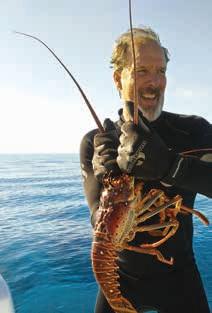

Most Keys cities have invoked special rules to cut down on neighbor-on-neighbor – and especially resident-onvisitor – “turf wars.” Essentially, local rules establish a “no-go” zone to keep lobster hunters away from private property. In the following areas, there is no diving or snorkeling within 300 feet of enhanced residential or commercial shoreline, any man-made or private canal, or any public or private marina.
In Islamorada, Key West and unincorporated Monroe County, the rule applies during the three days prior to the sport season (July 27-29 in 2025), the entirety of the sport season (July 30-31) and the first five days of the regular season (Aug. 6-10). In Marathon, the rule only applies during sport season, and in Key Colony Beach, it applies from the four days preceding sport season through 10 days after the opening of regular season. The city of Layton has a prohibition on harvesting lobster any time from waters within city limits.
Divers and snorkelers in the water must display a diver-down fl ag. The fl ag must measure 12 inches by 12 inches if flown from a buoy or float, or 20 inches by 24 inches if flown from a vessel or other structure. Flags must be flown from a vessel’s highest point and must be visible from all directions. Divers should stay within 100 feet of their dive fl ags in channels, or within 100 yards of their fl ags in open water. Vessels inside these distances must fully slow down to idle speed.
Don’t lobster in these areas:
Sanctuary preservation areas (SPAs)
Carysfort Reef, The Elbow, Key Largo Dry Rocks, Grecian Rocks, French Reef, Molasses Reef, Conch Reef, Davis Reef, Hen and Chickens, Cheeca Rocks, Alligator Reef, Coffins Patch, Sombrero Key, Newfound Harbor Key, Looe Key, Eastern Dry Rocks, Rock Key, Sand Key.
Ecological reserves
Western Sambo, Tortugas Ecological Reserve.
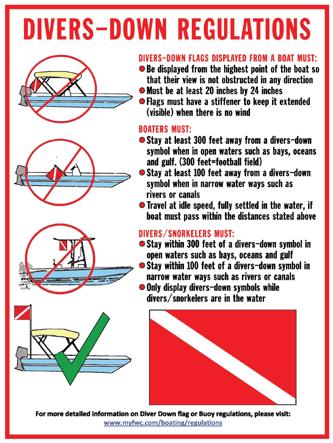
Special-use research only areas (No entry)
Conch Reef, Tennessee Reef, Looe Key Patch Reef, Eastern Sambo.
Other closed areas (year-round)
Everglades National Park, Dry Tortugas National Park, Biscayne Bay Card Sound Spiny Lobster Sanctuary, Biscayne National Park Coral Reef Protection Areas, City of Layton, John Pennekamp State Park Lobster Exclusion Zones.

Through successful completion of FWC’s annual Lionfish Challenge, recreational lobster hunters can up their bag limits during each of the sport season days by one lobster per challenge finisher per day. All information, including detailed instructions to submit proof of the minimum 25 harvested lionfish, is at fwcreefrangers.com.
• Increased bag limits ONLY apply to harvesters who complete the challenge, submit their tails, and receive a 2025 Challenge Coin. Please note that while the coin allowed two extra lobsters per day in 2024, for 2025, it has returned back to its original rule of one per day.
• The increased bag limit applies ONLY to the harvester who completes the challenge, NOT all divers aboard a vessel.
By Alex Rickert

Anyone can hop on a boat and head out to the bay in search of bugs, but for those who’ve been out lobstering with a seasoned local pro, you know: little changes can make all the difference between limiting out and catching nothing but a sunburn. The gear you use is a matter of personal preference, but spending a few extra dollars on the items listed here, especially at your favorite Florida Keys tackle or dive shop, is well worth the investment.
A buoy with 15-20 feet of line and a weight. Fewer things can be more infuriating than seeing a great lobster hole, swimming or driving past it, and then never finding it again. Find the best combination of floats and weights that work for you (boat fenders and pool noodles work great!) and mark the hole with the weight before you get to work. The buoy on the surface gives captains a visual reference for where divers are working in the water.


A properly-weighted freedive weight belt. Even in 10 feet of water, diving down repeatedly all day is exhausting. If properly equipped, a weight belt can take much of the work out of descending and staying on the bottom. Consult your local dive shop for the proper amount of weight to use, and make sure your belt can be quickly and easily dropped in an emergency.
Products like GearKeepers and similar retractors. If you’ve never dropped a tickle stick or accidentally left a piece of gear at your favorite honey hole, consider yourself lucky. But if you’re wearing a weight belt like we just talked about, products like GearKeepers or other dive gear retractors can allow you to keep a fl ash-

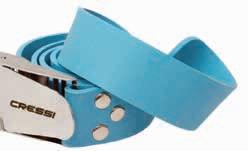
light, your tickle stick, net or anything else immediately handy, while keeping your hands free.
A quality catch bag. There are a few basic designs that are popular on the market today, but even the slightest differences can have a huge effect on your lobstering day. Heavy-duty plastic zippers to easily open and dump your catch, sturdy attachment points, and a mouth that doesn’t allow your hard work to escape make all the difference. If you’re swimming with your bag, consider one without mesh on both sides so that spines don’t poke your skin all day.
Adequate gloves. Ill-fitting, cheap gloves just don’t do the trick if you spend enough time bug-hunting. Gloves with features like rubber guards for the tops of hands, puncture-resistant material like dyneema, and a solid grip coating on the palm pay big-time dividends.
Socks, especially dive socks. If you don’t dive or snorkel regularly, a day of fins and bare skin can mean a world of pain on day two if your feet are rubbed raw. Consider a pair of socks or dive socks for extra protection.
When you’re back at the dock with your catch and it’s time to start cleaning, don’t just wring the tails of live lobsters and leave them to suffer. Your catch can be instantly, humanely dispatched before prepping that tasty meal.
METHOD 1: Insert a stiff, sharp knife – NOT a bendy filet knife – directly down into the center of the lobster’s carapace from the top side, cutting forward along the centerline towards the split between the eyes.
METHOD 2: Insert the same stiff, sharp knife from the bottom of the lobster at the midline near the top of its sternum (the fl at, triangular section between the legs). Insert the knife and twist. Be careful to hold the lobster properly or upside down on a table – do not run your knife all the way through the carapace and into your other hand.







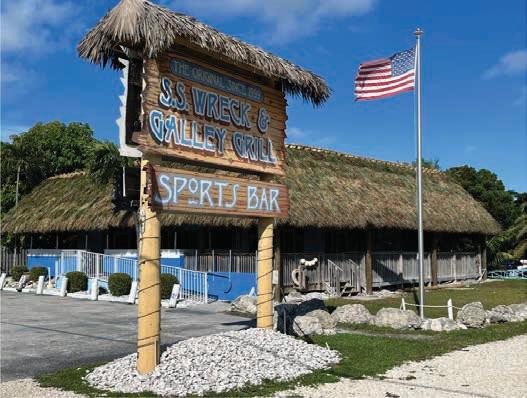



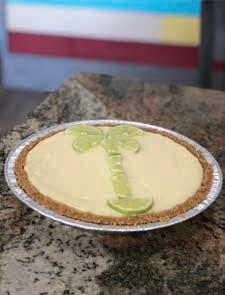



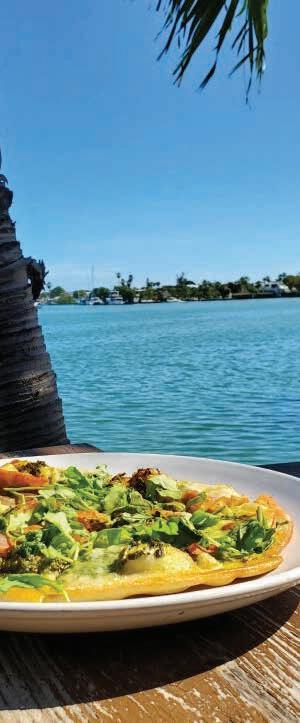
BOGO Mimosas & Glasses of Sparkling Wine BRUNCH 11AM - 2:30PM
Chorizo Breakfast Burrito, Guava French Toast, Crab Benedict




MONDAY: Closed
TUESDAY: Jumbo Gumbo Bowls Tacos and Tequila
WEDNESDAY: Wine Time Wednesday ($15-$20 bottles)




THURSDAY: Prime Rib Night Live music: John Bartus
FRIDAY: Live music: Abstract Radio
SATURDAY: Brunch, 11am to 2:30pm BOGO Mimosas & Sparkling Wine
SUNDAY: Brunch, 11am to 2:30pm BOGO Mimosas & Sparkling Wine
By Mandy Miles
As all Florida Keys boat captains know, dropping anchor can be a heck of a lot easier than pulling anchor when changing fishing locations or heading for shore.
The water surrounding our island chain is an underwater obstacle course of rocky ledges and random coral heads that can hopelessly foul (or snag) traditionally-rigged anchors and their attached chain, which often end up abandoned on the ocean floor.
But all experienced captains in the Keys also know a low-tech trick to prevent the high-frequency problem of a snagged anchor — and the added aggravation of having to snorkel or dive down to whatever depth to manually free the heavy metal: the breakaway.
A few zip ties or a few feet of nylon line are all one needs on board to prevent the problem of having to retrieve a stuck anchor from deep water, abandoning it entirely, or breaking off a coral head on the Keys’ precious reefs.
Depending on the size of the boat, the anchor gear, including the chain, can cost thousands of dollars, so cutting the line and throttling back to shore is NOT an attractive option.
So give yourself a break and do what the local pros do — rig yourself a breakaway.
Instead of attaching the shackle through the loop at the top of an anchor shaft, which is typical, use the hole that’s at the bottom of most anchors to attach the shackle, which will then connect to the anchor chain.
Once the shackle and chain are attached to the bottom of the anchor, run the chain up the anchor shaft toward the top, but don’t try to feed the chain through the eye at the top of the anchor. Instead, use several wraps of thin, nylon line (or zip ties, although plastic is never an optimal material if it could end up in the ocean) to attach the chain to the top of the anchor.
In normal anchoring conditions, the anchor can be lowered and raised as usual. But if the anchor becomes hopelessly snagged — and the usual method of gently rocking the boat in and out of gear
white positioned directly over the anchor doesn’t work — then give the throttle a bit of a push and the breakaway ties will, well, break away from the anchor shaft.
As the shackle and anchor chain are attached to the bottom of the anchor and not the top, once the breakaway ties give way, the anchor will be pulled free via its base rather than its shaft. “Once the breakaway breaks, that son of a (gun) gets pulled out backwards from whatever rock ledge it’s stuck in,” said captain Stan Miles, who has been fishing the Florida Keys for nearly 40 years.
While recently captaining a private 68-foot Viking, Miles noted that the boat’s Fortress-style anchor didn’t have a hole at the bottom.
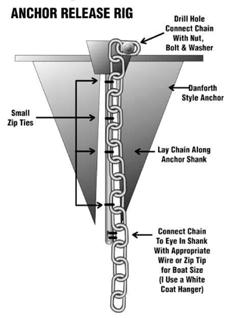
“It was no problem to drill a hole at the opposite end,” he said. “Then I went to Cubanitos here in Key West and got some 400-pound green nylon line. I took about 10 wraps of that cord through the new eye that I had drilled at the bottom of the anchor and around the anchor chain. It was strong enough to hold the boat in place and keep us from drifting while anchoring out and catching yellowtail, but the two times the anchor got stuck while we were down near the Tortugas, the breakaway line worked exactly as designed. No one had to dive down to free it.
“More importantly, we didn’t have to abandon thousands of dollars worth of anchor and chain and then head back to Key West with no anchor on board. That’s horribly unsafe. If the boat loses power, runs out of fuel or anything else happens and you have no anchor, then you’re just drifting at the mercy of the wind and current.”
“Every good captain I’ve known down here has always used some version of the breakaway,” Miles added. “Obviously, you adjust the strength of the breakaway line you use based on the size of the boat, but the system has never failed me.”

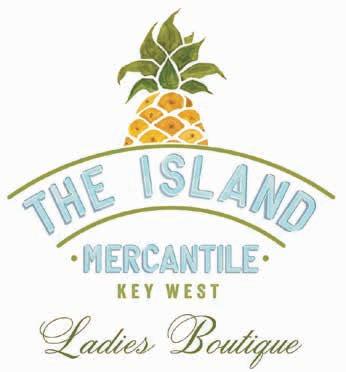



























By Alex Rickert

Random stops on the water will become less frequent this summer, courtesy of the Boater Freedom Act recently greenlit by Florida Gov. Ron DeSantis. But contrary to some social media discourse on the new law, it’s not a blanket permission to dismiss the blue lights of law enforcement if you think you’ve done nothing wrong.
Signed into law on May 2 and effective July 1, Senate Bill 1388’s marquee provision prevents law enforcement officers from stopping a vessel on the water solely for the purpose of conducting an inspection of safety or sanitation equipment – rather, officers must have probable cause that another violation is occurring to board and search a boat. Violations of safety or sanitation equipment regulations will be moved down to a secondary offense.
“Florida is the boating and fishing capital of the world, and the Boater Freedom Act will ensure that this remains the case,” said DeSantis in a press conference announcing his signature.
The bill governs the FWC and local police forces or sheriff’s offices in state waters, but the mandate to protect Florida’s resources is governed
by a separate statute than the one modified by SB 1388 – and that means officers observing fishing gear, spear guns or other harvesting equipment (read: lobster gear) still have probable cause to stop a vessel.
“You can basically break stops down into three categories: safety, resource and operations,” said Monroe County Sheriff Rick Ramsay. “The last two are still normal. … It’s not giving you carte blanche to just do anything you want, unchecked.”
“We’ll be looking at navigation rules, looking at reckless and careless operation – and through those tools, if there’s a need to make a stop to ensure proper operation and that there’s no safety issue with individuals, we will,”
— FWC Capt. David Dipre.
The new law also doesn’t affect safety stops by the U.S. Coast Guard, governed by federal law, in any waters, whether state or federal.
While stops for the sole purpose of checking a boat’s safety equipment will be curbed for FWC and MCSO by a new Florida law, activities such as checking the catch aboard a boat will remain unchanged. KEYS WEEKLY FILE PHOTO
“If you see a Coast Guard boat with blue lights, stop your boat,” Ramsay said. “If they say ‘Let me see your life jackets and flares,’ don’t argue, and don’t say the law has changed – it hasn’t.”
DeSantis began drumming up support for the initiative in February, citing cases like a highly-publicized incident in Jupiter in which a captain allegedly driving his boat on full plane through a slow-speed zone was briefly arrested under suspicion of boating under the influence before eventually blowing a 0.0 in a breathalyzer test.
Critics of the bill fear that fewer safety stops could lead to a greater number of unchecked violations, including boating under the influence and resource violations along with boaters pumping their sewage into environmentally-sensitive waters.
According to FWC, in 2024, 10 counties in Florida accounted for 59% of the reportable boating accidents, with Monroe County second only to MiamiDade. A total of 685 reportable accidents and 81 fatalities were reported – 26 and 22 more, respectively, than in 2023.
So if you see blue lights on the water this summer, take a pause, show off your safety gear and impressive catch, and be on your way.



















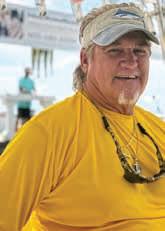










































































By Mark Hedden
I feel bad that I often don’t take least terns as seriously as I should. It’s not their fault they are so tiny and slight looking. It’s not their fault that their call sounds like a puppy going to town on a squeaky toy. It’s not their fault that the descriptive in their name – “least” – robs them of gravitas.
I mean they are, in fact, real legitimate birds living real legitimate lives. And they deserve our respect.
Terns and gulls are members of the Laridae family, with terns being the Gallant to the gulls’ Goofus. For instance, unlike gulls, you don’t see terns digging through the trash. You don’t see terns sitting on pelicans’ heads, trying to steal fish out of their mouths. You don’t see terns trying to steal french fries out of the hands of small children.
Terns are pescatarians, and by not being willing to eat anything but fish, they by nature observe a sense of appropriateness and propriety. They know what they are about, and how to stay in their ecological lane.

The “least” part of the least tern name should denote that they are the smallest members of the tern family, though in actual fact they are tied with a species called the little tern for that honor. For a while the two were considered the same species, but then they were reconsidered as two closelyrelated species.
The way you can tell them apart is by their call – the little tern sounds less like a squeaky toy and more like the audio on an old VCR tape when you back it up. Also by the fact that you see least terns in the Americas, and little terns in Europe and Africa. Both species are about nine inches from beak to tail, and weigh just a little more than a roll of Lifesavers.
While least terns know what their dietary niche is – small fish generally less than nine centimeters in length – they are not inflexible. This is exemplified by the fact that in the Keys they used to nest on the beaches. But now that the beaches are dominated by humans and the trappings of humanity, they’ve taken up nesting on the gravel rooftops. It’s why you see them so often flying over supermarket parking lots and places like the federal courthouse in Key West.
But I also see them pretty commonly when I’m out on the boat, mostly in nearshore waters, usually less than a mile or two off the shore. They’re the small white things, ripping around the sky, diving down into the water, acting like the frenetic, aquatic sprites they are.

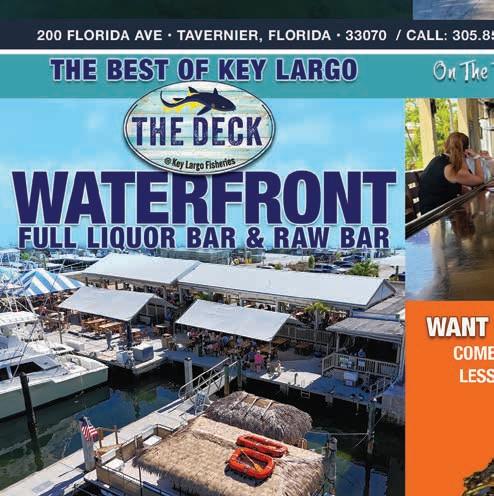





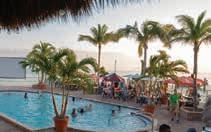





Education, lessons, and gear for paddleboarding, wakeboarding, kiteboarding, foil boarding, winging, skateboarding, wakesurfing, skimboarding & more.

Drinkware,
island living with women’s swimwear and accessories for every body. From performance-ready suits to relaxed resort wear, Amber Waves helps women feel confident from XS to 3XL.
Swimwear | Beach Cover-ups Clothing | Hats | Jewelry
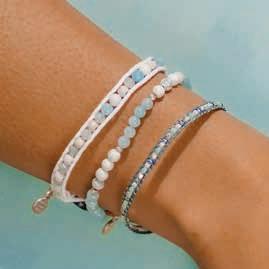

By Capt. Bill Giliberti
Lobster season is right around the corner and like many others here in the Florida Keys, it’s something that I look forward to every year. As a charter fisherman with Top Notch Sportfishing, I spend most of my days on the water bending the rod. However, lobstering is when I get to explore the vibrant reefs and seagrass beds these crustaceans call home.
Caribbean spiny lobsters are gregarious by nature, meaning that they occupy dens with other lobsters. As my wife, Dr. Kylie Smith – a former lobster researcher turned coral reef restoration practitioner with I.CARE – likes to tell me, these lobsters find each other through their pee (no, seriously).
Studies show that lobsters send signals through their urine that tell others if they are healthy and have access to good food supplies. That’s why when you find one, you’re likely to find enough to fill your dinner plate.
When diving for these lobsters, many prefer using the net-and-tickle-stick approach, where you use the tickle stick to get the lobsters to shoot backward (their natural predator avoidance behavior) into your net. I highly recommend wearing gloves so that once the lobster is in your net, you can grab onto their carapace (body) instead of grabbing them by a leg or antenna.
Lobsters must be at least 3 inches in carapace length, which is measured from between their eyes to the end of their shell. If the lobster is too short or
has eggs, gently release them so they can live another day. A female lobster will carry her eggs in an orange spongy sack that she holds under her tail for four weeks until she releases them into the water column, and our law enforcement here in the Keys will take it VERY seriously if they believe eggs have been scraped from a lobster.
A fun fact to notice while you’re measuring: The pattern on a lobster’s rostral horns (those spiky things that protect their eyes) is like a fingerprint. Each is unique.
Another thing to keep in mind this lobster season is protecting our marine habitats. Lobsters of legal size typically inhabit coral reefs and seagrass beds; each is essential to supporting the diversity in our waters and our way of life as locals. Please protect these fragile ecosystems by watching where you put your hands and kick your fins.
Lobstering is an activity that many visit the Florida Keys each year to enjoy. However, it’s important to remember that these reefs and waters are still home to many other creatures important to our communities. Stay safe and happy hunting.
Capt. Bill operates Top Notch Sportfishing (topnotchkeysfishing.com / 732674-8323). To learn more about I.CARE, including how you can be involved with coral transplants, visit icareaboutcoral. org.

















NEW HAPPY HOUR 1-5PM






$7 Menu
• Chicken Wings & Livers + other delicious items including some sushi
• 32 beers on tap 1/2 OFF from 3pm-5pm














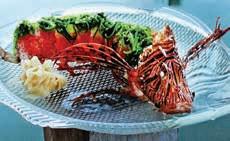







• $2 Pints of Yuengling and Bud Light!
POWER HOUR 2 - 3PM
• 1/2 priced drafts
BREAKFAST UNTIL 2PM
• Unique & interesting menu
• $3 Mimosas • $5 Breakfast Shots
LUNCH & DINNER
• Lobster Enchiladas
• Diver Speared Local Fish


• Prime Rib • Local Lobster
• Cook Your Own Catch
• Great Seafood Selections
SUSHI
• Toro • Lionfish • Poke • Hamachi collar
• Fresh Uni arrives on Wednesdays
DINGHY DOCK





